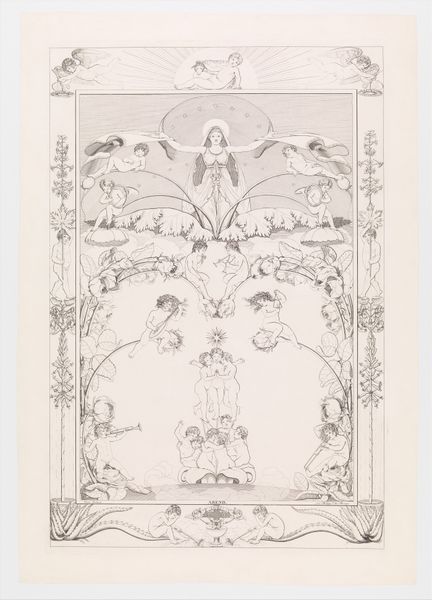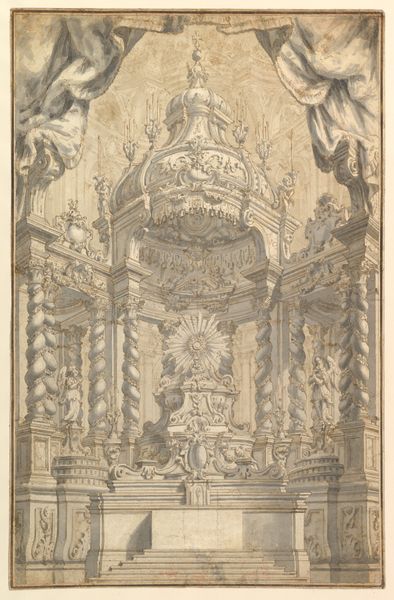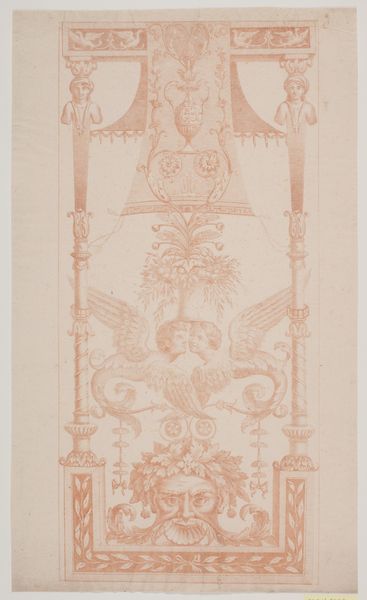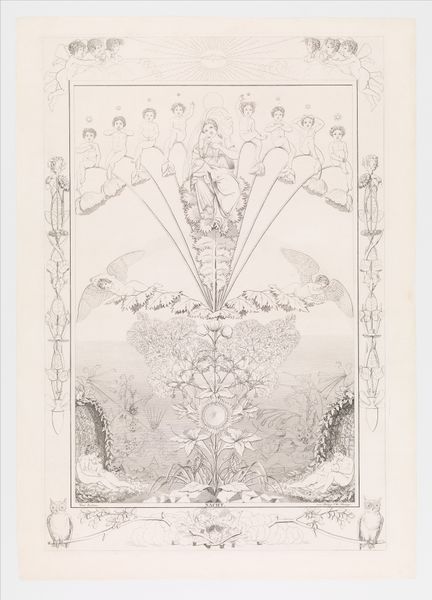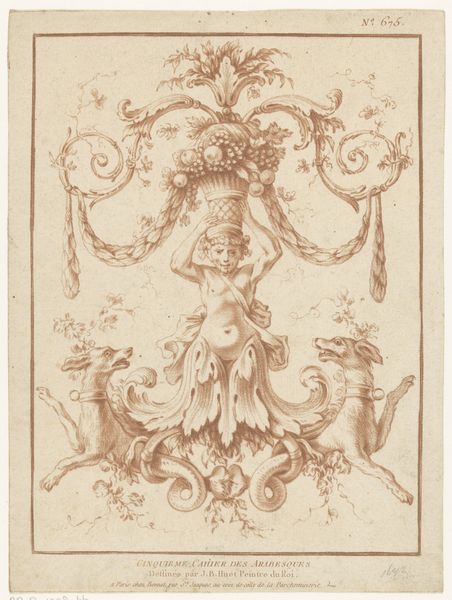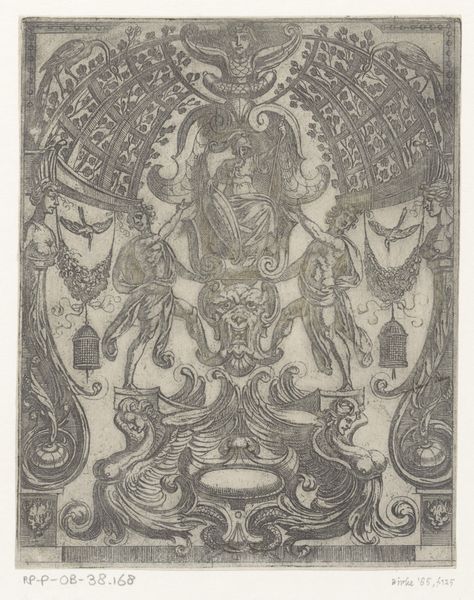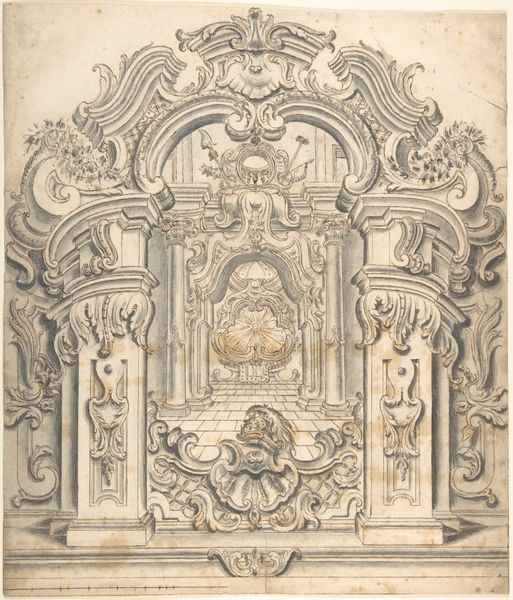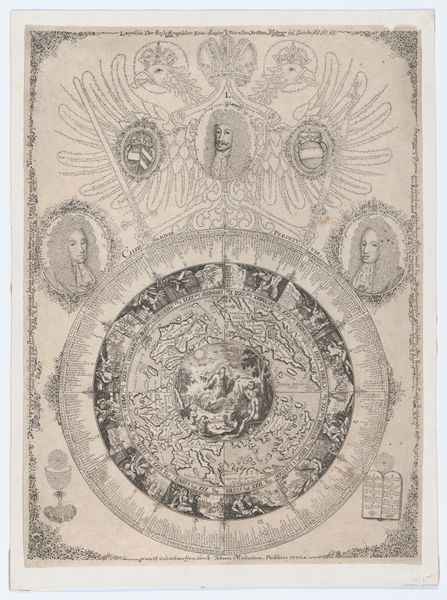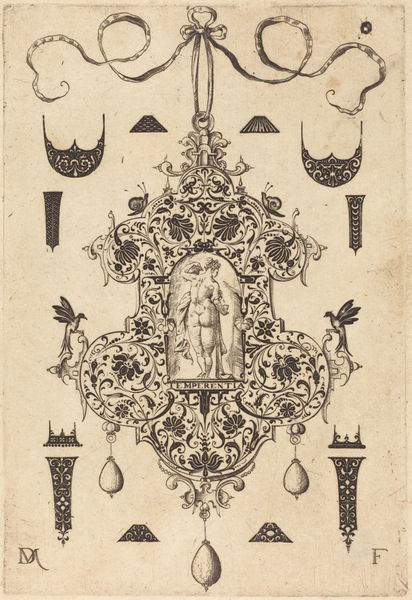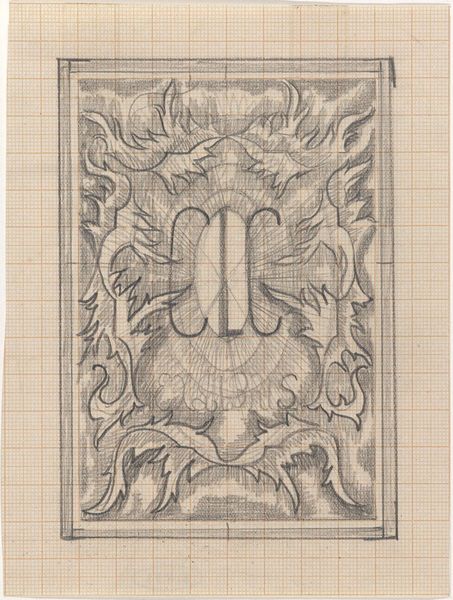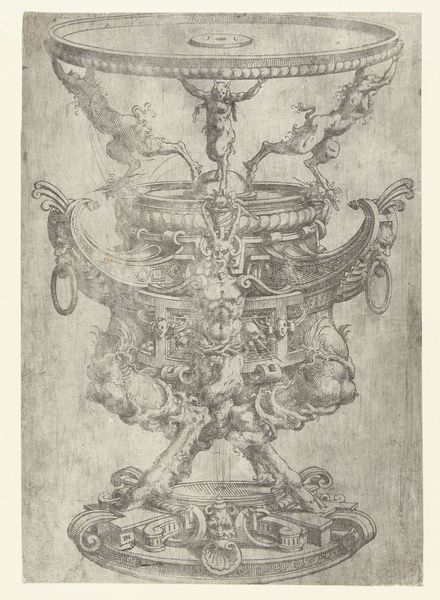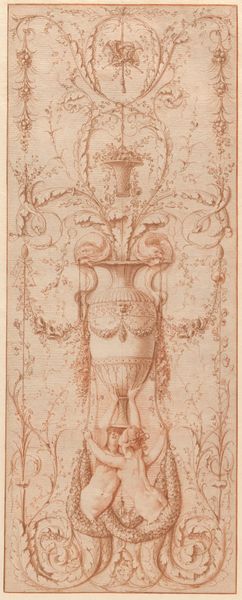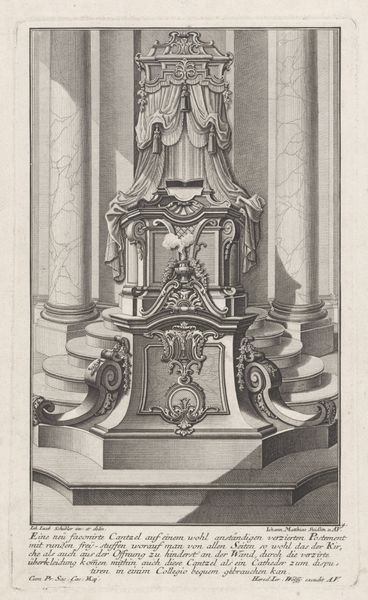
Dekorationsudkast med genier, der bærer en krone og en tronhimmel 1720 - 1751
0:00
0:00
drawing, etching, architecture
#
drawing
#
allegory
#
baroque
#
etching
#
etching
#
history-painting
#
architecture
Dimensions: 404 mm (height) x 245 mm (width) (bladmaal)
Editor: Here we have Marcus Tuscher's "Dekorationsudkast med genier, der bærer en krone og en tronhimmel," or "Decorative draft with geniuses carrying a crown and a baldachin," an etching made sometime between 1720 and 1751. The sienna tones give it a warm feel despite the almost overwhelming ornamentation. What do you see in this piece? Curator: This etching provides a fascinating lens through which to examine power structures in the Baroque period. Note how the cherubs and geniuses are employed. How do you feel about their purpose? Editor: They're definitely performing, or acting. Like they're aware that they are conveying allegorical importance for…someone? The crown seems to be their only concern. Curator: Exactly. This seemingly innocent depiction of cherubs carrying symbols of monarchy speaks volumes about the era's deeply entrenched belief in divine right. Consider, too, how this imagery was disseminated. Etchings such as these allowed for widespread distribution of politically charged symbols. How might this affect or be consumed by diverse populations? Editor: Ah, so it’s propaganda? Like disseminating an idealized image of power throughout the population? Curator: In a sense, yes, although I would phrase it more like manufacturing consent. We need to remember, though, who the target demographic was. It reminds me of Foucault's analysis of power—not just a top-down imposition, but also something actively constructed and circulated within society. Even the artistic style—Baroque—became complicit. Editor: So, analyzing something like an etching allows us to critically examine both the visual vocabulary of power and the strategies through which certain hierarchies became normalized? Curator: Precisely! This artwork isn't just a pretty picture. It's a historical document ripe for interrogation through critical frameworks related to power, representation, and ideology. What’s changed since the Baroque Era, and what hasn’t? Editor: This has definitely given me a new perspective. I realize now that what seems beautiful on the surface can be charged with historical and political complexities. Curator: And I will look again at all of this "beauty" we have. The act of looking requires vigilance and critical thought, especially toward works that might appear benign.
Comments
No comments
Be the first to comment and join the conversation on the ultimate creative platform.
